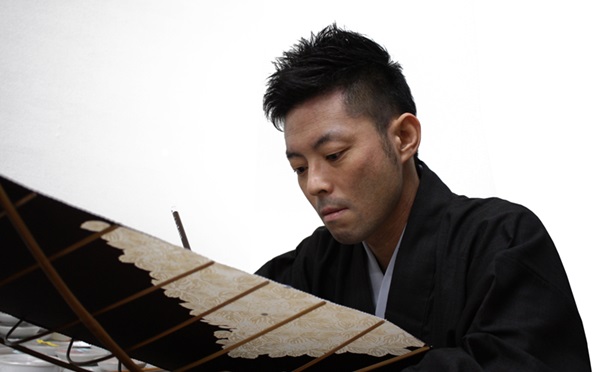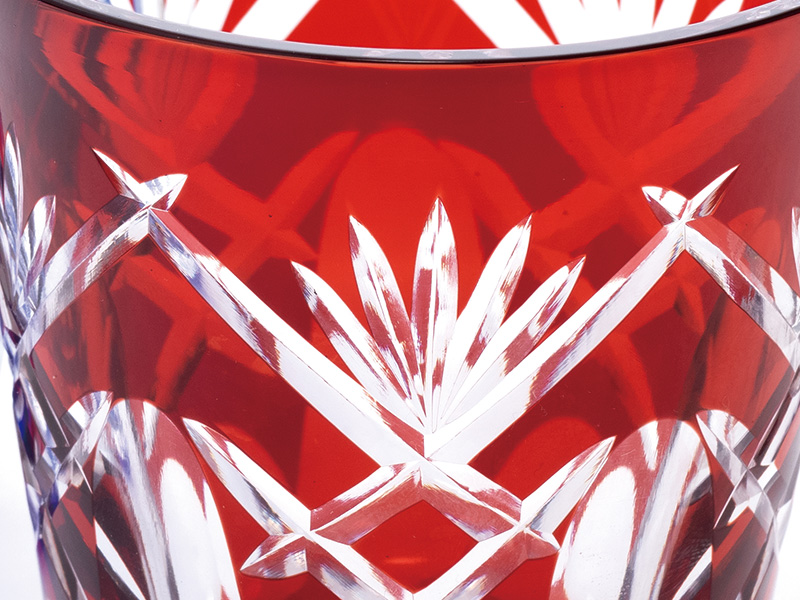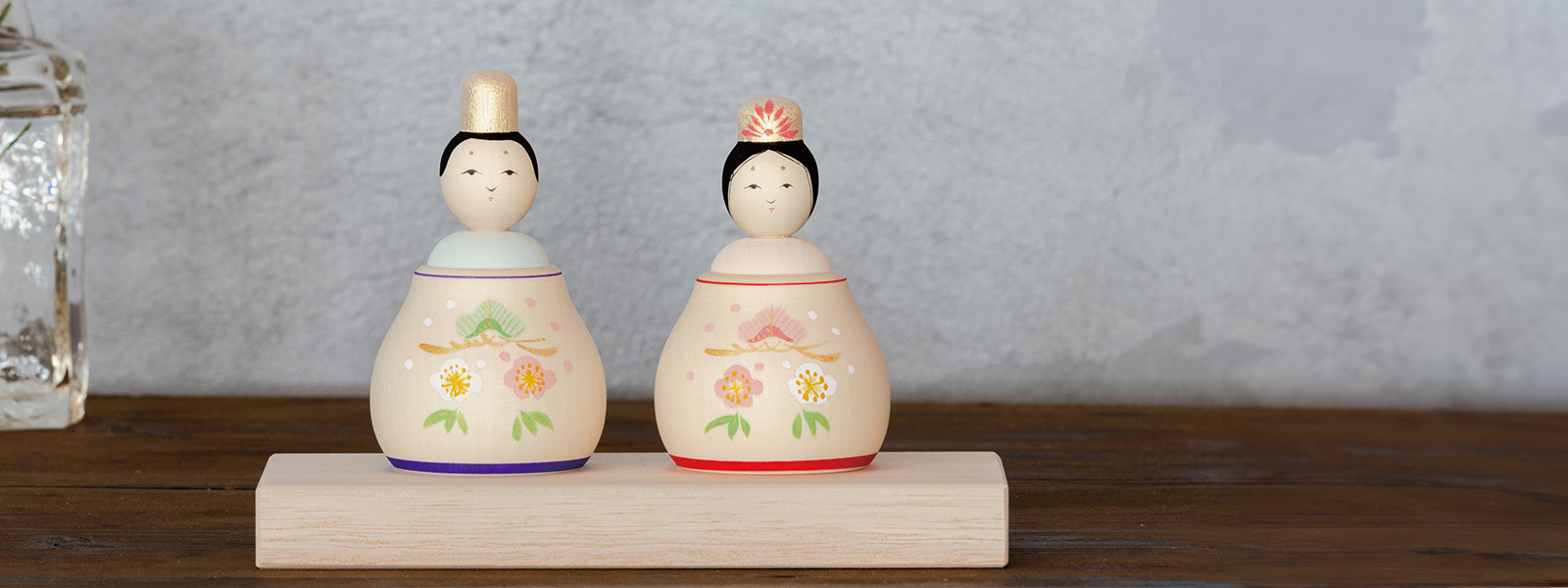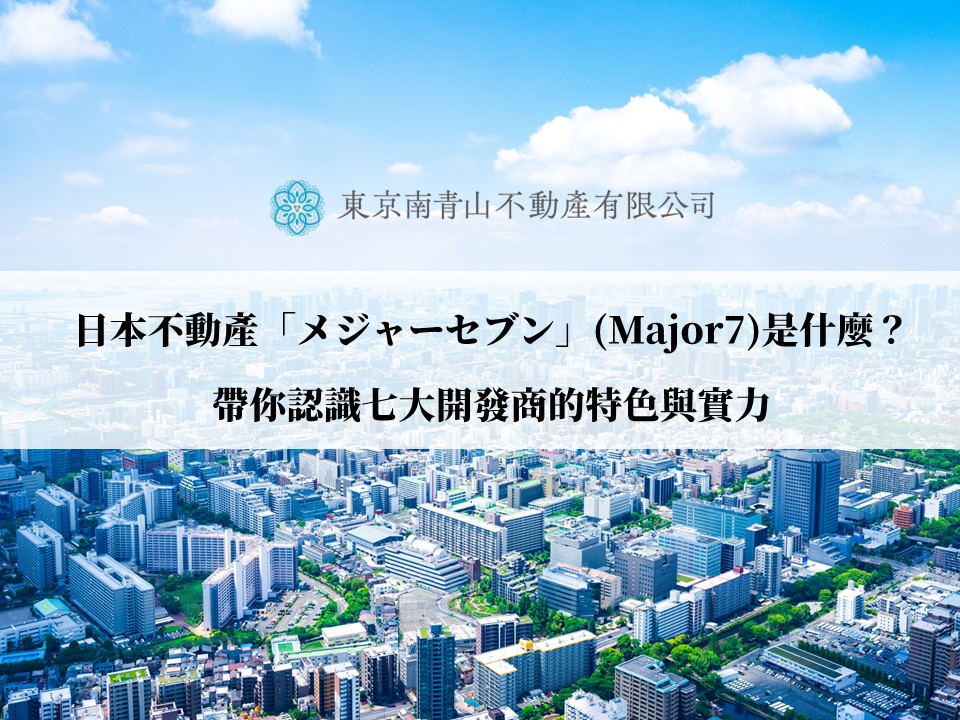In the heart of Tokyo, specifically in Takadanobaba, Shinjuku-ku, “Ogura Sengei” (Ogura Dyeing Arts) has dedicated a century to perfecting “Tokyo Hand-Drawn Yuzen.” This traditional craft combines intricate designs with vibrant colors, drawing inspiration from European murals. Takashi Ogura, the third-generation master of Ogura Sengei, skillfully blends various hues to enhance the wearer’s inner beauty.
In our recent interview, we had the privilege of speaking with Mr. Takashi Ogura, a third-generation Ogura Sengei Artist, and an expert in traditional craftsmanship.

In Australia, where I studied abroad, I noticed…
The charm of “Tokyo Hand-Drawn Yuzen”
――Did you ever consider taking over the family business from a young age?
In fact, I had no intention of doing so. After graduating from university, I worked at a sports store with the goal of pursuing a career in product design for sporting goods.
When I went to Australia to study abroad at the age of twenty-three, I changed my mind. While everyone around me proudly discussed the charms of their countries—the food culture, history, and more—I found myself unable to articulate what was great about Japan. One day, I mentioned to my host family that my parents were skilled in making kimonos. Their response surprised me: ‘Your father is a craftsman who creates traditional costumes.’ That moment left me stunned and opened my eyes to the rich cultural heritage of Japan.
After the sporting goods company I worked for shifted its structure, the company made the decision to outsource all design work. Unfortunately, this meant I could not create the designs I had envisioned. During that period, I began to see my father’s work as a type of ‘design.’ Since childhood, I had taken the sight of craftsmen working in the workshop for granted, so I never fully appreciated it.
――It was so familiar to me that I didn't realize it.
That is right.
I came to realize that being born into a family with a traditional industry business and inheriting that tradition was a unique opportunity. It was not something everyone could experience. Around the age of 26 or 27, my interest in my father’s work finally awakened.
――After your father’s retirement, did you train under him?
It suggests that one should train at a workshop in Kyoto or Kaga before becoming a craftsman, but I embarked on this path at the age of twenty-seven, which is considered late. From the outset, I chose to train with my father.
――What is the unique appeal of " Ogura Sengei"?
It lies in its blend of ‘elegance’ and ‘modernity.’
Like Tokyo Hand-Drawn Yuzen, it features a clean design with a limited color palette. This refined approach sets it apart and makes it truly distinctive.
We are particularly meticulous when it comes to creating colors. We achieve our hues by blending two or three colors from a palette of approximately ninety dyes.
Crafting these colors is not a one-time task; during training, we repeatedly recreate them under the guidance of our master. This delicate process is crucial because even a single drop can alter the color significantly.
Additionally, during air-conditioned seasons, we remain vigilant, checking for any color changes each time we resume work after a break.
.
At first glance, some people might think it is easy to create colors because it only has a small number of colors. However, the skill of balancing colors is the unique characteristic of Ogura Sengei.
Yuzen dyeing
Mixing colors from a variety of dyes
Designing each piece meticulously and infusing it with heartfelt emotions.
――How long does it take to complete a single kimono?
The time required for completing a single kimono varies depending on the design. The process involves applying colors, allowing them to dry, layering additional colors, and repeating these steps. Some kimonos take several months to complete.
Before that, there is a significant amount of time spent deciding on the design.
Craftsmen often create preliminary sketches on paper, which they then drape on the body to visualize how the kimono will look. Adjustments are made to the positioning and size of patterns. Once the design finished, the color selection begins.
Nowadays, there are applications that allow designers to overlay diverse colors on the imported design, facilitating comparison and consideration.

――Even when we categorize colors broadly as ‘reds’ or ‘blues,’ there are truly countless shades. Is there anything that you refer to or value when contemplating design?
When considering designs, I often draw inspiration from things I have seen—such as tiles and murals in European temples or designs I have encountered during my travels.
Unlike Kyoto or Kaga, Tokyo’s Yuzen lacks many traditional motifs. However, this freedom allows for a wide range of unique atmospheres within the same ‘Tokyo Hand-Drawn Yuzen.’ That diversity is part of its charm.
However, always remember that the true star is the person wearing the kimono. While a design might appear subtle, it should enhance the wearer’s allure when draped. That delicate balance is what I keep in mind.
――Unlike Kyoto and Kaga, Tokyo Hand-Drawn Yuzen is the work of a single craftsman. What is the most difficult among the processes?
Among the intricate processes, applying colors is indeed challenging.
Creating the colors themselves is also complexed, especially achieving smooth gradations by layering from light to dark beginning with the white pigment known as ‘gofun,’ made from crushed shells.
In my practice, I utilize over three hundred types of brushes.
After each use, the brush is soaked in water overnight to ‘remove’ excess color, although complete removal is impossible. Consequently, newly grated brushes transition from a lighter hue to a deeper one with continued use, adapting to various stages for each color.
Interestingly, the brush’s role extends beyond mere application. It also dissolves dyes when they can no longer be used—for instance, when the bristles become frayed. Additionally, broken or fallen-out bristles serve to mix gold. Each brush carries a unique history and purpose.
I want to create captivating kimonos that make people think, ‘I would like to wear that.
Even with the same color, gradation can be created by changing the intensity
Once you have used the brush, soak it in water overnight to remove the color.
I want to create captivating kimonos that make people think, ‘I would like to wear that.
――So you use everything efficiently until the very end.
Not only brushes but also the quality of tools has become harder to obtain as the demand for kimonos decreases.
Because we want to make the most of good tools, we manage them with care. It might seem obvious, but daily maintenance of our tools is crucial work.
In today’s world, where 100-yen stores abound and rapid consumption is the norm, each item has a designer behind it, and it carries various people’s intentions. It is essential to cherish these aspects in our craftsmanship and pass on the same values to younger generation.
Kimono, when unraveled, becomes a single piece of fabric. It can be refitted to match body shape and height. I hope that those who wear it will treasure it for a long time and pass it on to the next generation.
Carefully use each tool and use it for a long time
The shape of the hair tip is different
―Mr. Takashi Ogura has expanded his sphere of activity beyond kimonos, collaborating with apparel brands and designing labels for sparkling wine.
It all began with the desire to promote awareness of ‘Tokyo Hand-Drawn Yuzen’ and encourage people to wear kimonos.
While there are approximately three hundred artisans in Kyoto and about 150 in Kaga who specialize in Yuzen, only fifty of them are members of the Tokyo Hand-Drawn Yuzen Association.
Interestingly, Tokyo lacks the presence of ‘production area wholesalers’—a contrast to Kyoto and Kaga. When I engage with customers at department stores and exhibitions, they often express surprise, saying, ‘I didn’t know Yuzen was created in Tokyo.’
Despite the declining popularity of kimono-wearing, I, as a craftsman, am enthusiastic about displaying the beauty of Tokyo Hand-Drawn Yuzen and encouraging people to wear it.
Our efforts also extend to nurturing the next generation, with the hope that someday more individuals will appreciate the intricate designs of kimonos."
――When considering future aspirations, what you would like to work on in the future, or what dreams do you have in mind?
My greatest dream is to see more people wearing kimonos.
However, we are committed to maintaining quality and avoiding mass production of inexpensive products merely for the sake of popularity.
I often compare our approach to that of a hidden hot spring—a place not widely known but worth visiting at least once in a lifetime. My hope is that meticulously crafted kimonos, created without compromise, will offer expanded options for occasions such as parties and extraordinary events.
《profile》
Takashi Ogura
Established in 1926, Ogura Sengei is now in its third generation. After gaining practical experience, Takashi Ogura studied under his father, Mr. Teiyu Ogura, in 2005. His specialization lies in a modern yet dignified style. He has been officially designated as a ‘Traditional Craftsman’ by the Minister of Economy, Trade and Industry and recognized as a Shinjuku Monozukuri Meister—a true expert in craftsmanship.”












